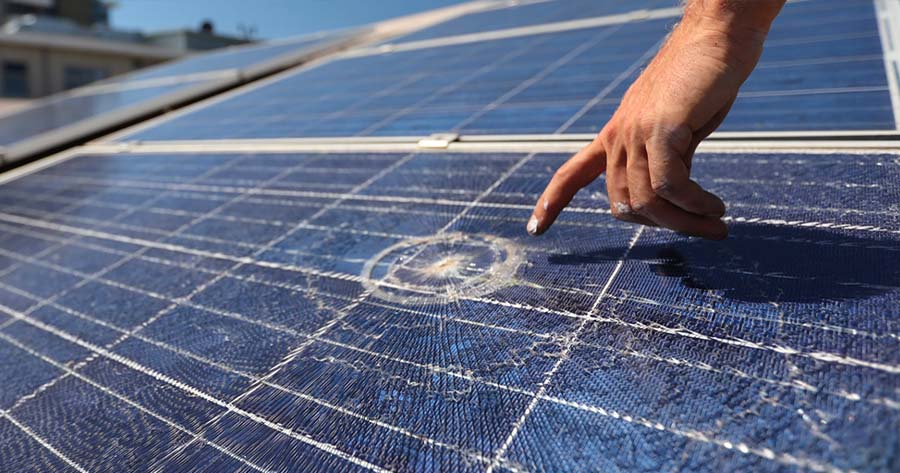Solar panels can suffer performance issues like any other piece of equipment. While you can fix some issues, others require professional attention. Below we’ve outlined some of the most common issues that affect home solar systems and offer some solutions.
Shaded Solar Panels
Solar panels suffer a drastic loss of energy production when covered by shadows since less sunlight can reach their surface. Professional solar technicians will try to place your solar panels in an unshaded area during installation. However, growing vegetation and other rooftop equipment can create new shadows, covering your solar panels.
Many home solar panels are connected together using a string circuit, meaning all PV modules in the circuit are affected when one is unproductive. A concentrated shadow covering just one of your solar panels can decrease the electricity output of the entire array.
Tree branches that grow above your solar panels should be trimmed regularly to prevent shading. Other rooftop equipment such as solar hot water collectors and air conditioners should be installed so they will not cast a shadow on your home solar system.
Accumulated Debris: Dust, Dirt, Leaves and Other Materials
Dust and other waste materials can accumulate on your solar panels and have the same effect as shadows. These materials can block incoming sunlight, and electricity production drops as a result. As mentioned before, you should clean solar panels regularly to ensure high productivity.
Loose or Damaged Electrical Connections
In a traditional solar system, individual modules are connected in a series circuit using junction boxes on the back of each panel. The entire circuit connects to a solar inverter, which converts the direct current (DC) output of your solar panels into the alternating current (AC) input used by your home devices.
If a junction box or connection between solar panels malfunctions, current cannot flow, and electricity production drops to zero. If no electricity is generated — even during daylight hours — you should contact your solar system provider as soon as possible. Other electrical faults can also cause a complete loss of production, which you will want to rule out.


